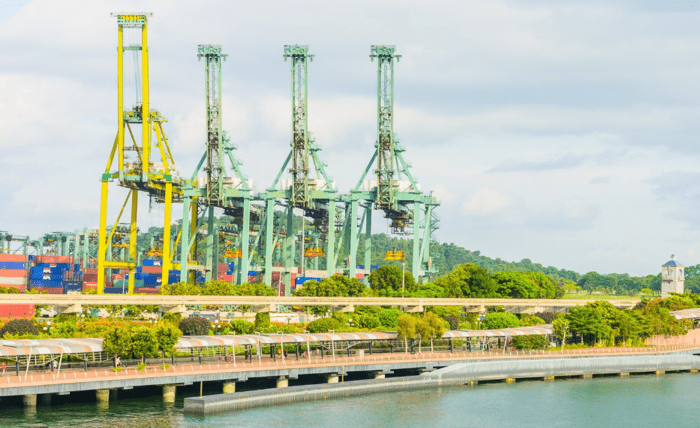
Picture a marina. What do you see? Chances are, you’re imagining docks stretching out over the water, lined with boats. For decades, those docks were likely built from two primary materials: pressure-treated wood (often soaked in chemicals like creosote) or massive, heavy concrete. They were functional, sure, but they came with a significant environmental price tag, from chemical leaching to habitat disruption.
Today, the world of commercial marina docks is undergoing a quiet but powerful revolution. Spurred by stricter environmental regulations, a growing demand from eco-conscious boaters, and a surprising long-term return on investment (ROI), marina owners are turning to sustainable materials and smarter construction methods.
But this shift isn’t just about “being green.” It’s about building better, stronger, and more resilient infrastructure that lasts longer and costs less to maintain. Let’s dive into the materials and methods defining the next generation of marinas.
The Business Case: Why Sustainability Makes Cents
For a busy commercial operation, any change has to make sense on the balance sheet. Going green isn’t just a marketing ploy; it’s a strategic business decision.
- Durability and Lower Lifecycle Costs: This is the big one. Many sustainable materials (like composites) may have a higher upfront cost than traditional treated wood, but their lifespan is often double or triple. They don’t rot, splinter, or succumb to marine borers. Over 20 or 30 years, the savings in replacement and maintenance (labor, materials, downtime) are massive.
- Regulatory Compliance: Environmental agencies are cracking down on what can be put in the water. Using materials that leach chemicals (like old-school treated lumber) or foam flotation that breaks apart can lead to hefty fines and forced remediation. Sustainable building is future-proofing your investment against new regulations.
- Enhanced Brand and Marketability: The modern boater is changing. They are more aware of their environmental footprint and are actively seeking out “Clean Marinas.” A visibly sustainable, well-maintained facility is a powerful marketing tool that can attract higher-value clientele and improve your marina’s reputation.
- Protecting Your Primary Asset: A marina’s entire business model depends on one thing: clean, healthy water. Construction and materials that damage water quality or destroy marine habitats are, quite literally, bad for business.
The New Toolkit: Sustainable Materials Up Close
The choice of material is the single most significant factor in a dock’s environmental impact. Here are the leading contenders challenging the status quo.
- Recycled Composites (Plastic Lumber)
This is arguably the king of sustainable dock materials. Made from post-consumer and post-industrial recycled plastics (think milk jugs, shrink wrap, and plastic bags), composite lumber diverts tons of waste from landfills and oceans.
- Pros: It is virtually maintenance-free. It won’t rot, warp, or splinter, and it’s impervious to saltwater and marine borers. It requires no chemical treatments, so it doesn’t leach anything into the water. Its durability makes it ideal for high-traffic commercial marina docks.
- Cons: It has a higher initial cost and can get hot in direct sun (though lighter colors mitigate this). It also expands and contracts with temperature changes, which must be accounted for during installation.
- Aluminum
Lightweight, strong, and highly recyclable, marine-grade aluminum is a fantastic choice, especially for the dock’s structural frame and floating systems.
- Pros: It has an extremely long lifespan and is highly resistant to corrosion in saltwater (when the proper alloy is used). It’s lightweight, which means less material is needed and floating docks have more buoyancy. At the end of its life, it’s 100% recyclable.
- Cons: It carries a premium price tag. It can also be noisy to walk on compared to wood or composite, though this is a minor issue for most.
- Sustainably Sourced Timber (FSC-Certified)
If the classic look of wood is non-negotiable, there’s a right way to do it. Forget the old CCA (chromated copper arsenate) treated lumber.
- Pros: Look for wood certified by the Forest Stewardship Council (FSC), which guarantees it comes from a responsibly managed forest. Newer, less-toxic treatments (like ACQ – Alkaline Copper Quaternary) are available, or you can opt for naturally resilient species like Black Locust.
- Cons: Even with better treatments, wood is still wood. It will require more maintenance and have a shorter lifespan than composites or aluminum in a harsh marine environment.
- Encapsulated Flotation
For floating docks, the foam-filled billets that keep them afloat have historically been a major source of pollution as they break down from sun, waves, and impacts.
- The Fix: Modern “encapsulated” floats are the solution. The foam (or even air) is completely sealed within a hard, UV-stable, and impact-resistant polyethylene shell. This shell prevents the foam from ever breaking off and polluting the waterway, and it’s also impervious to marine life.
Building Smarter: Low-Impact Construction Methods
The materials are only half the story. How you build your commercial marina docks matters just as much.
- Minimizing the Footprint with Helical Piles: Instead of driving massive wood or concrete piles deep into the seabed, a process that is loud, disruptive, and clouds the water (increasing turbidity), many modern marinas use helical piles. These are essentially giant metal screws that are quietly and cleanly drilled into the seabed. They cause minimal disturbance, can be easily removed, and provide incredible holding power.
- Designing for Light Penetration: Solid docks cast a dark shadow, killing off the vital seagrass and submerged aquatic vegetation (SAV) below. This “shading” destroys critical fish habitats. The solution? Grated decking. By using deck panels with small openings (often made from composite or aluminum), sunlight can pass through the dock and reach the vegetation below, allowing the ecosystem to thrive.
- Integrated Stormwater Management: A dock isn’t an island. The runoff from the surrounding parking lots and walkways often carries oils, fuels, and cleaning chemicals directly into the marina basin. A sustainable design incorporates vegetated swales or permeable pavers on land to capture, filter, and clean this stormwater before it becomes pollution.
Conclusion
The transition to sustainable materials and methods for commercial marina docks is no longer a niche trend; it’s a fundamental shift in how the industry operates.
By choosing durable, non-leaching materials like composites and aluminum, and by employing smarter construction techniques like helical piles and light-penetrating decks, marina owners can build facilities that are not only compliant and eco-friendly but also more profitable. They offer a superior customer experience, demand far less maintenance, and protect the very water that makes their business possible.




